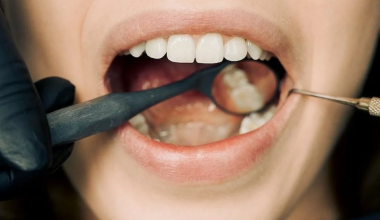Introduction
As we age, our bodies undergo numerous changes both internally and externally. These changes can often be the breeding ground for various diseases that can affect our health and well-being. However, with recent advancements in medical technology, there is a new tool that’s helping physicians predict disease risks before they even occur- Ageing Body Scans. In this blog post, we’ll explore how ageing body scans work and their role in predicting disease risk.
Benefits of Ageing Body Scans
Ageing body scans have become increasingly popular in recent years, and for good reason. These scans offer a wealth of information about the state of our bodies as we age, allowing us to take proactive steps towards maintaining our health.
- Identify Potential Health Risks : One significant benefit of ageing body scans is that they can help us identify potential health risks early on. By detecting changes in tissue density or bone mass, these scans can alert us to conditions like osteoporosis before they become more serious.
- A Baseline For Future Comparisons : Another advantage of ageing body scans is that they provide a baseline for future comparisons. By undergoing regular scanning over time, we are able to track changes in our bodies and monitor the effectiveness of any interventions we may be undertaking.
- Peace Of Mind By Offering Reassurance : Ageing body scans give us peace of mind by offering reassurance that everything is functioning as it should be. Knowing that there are no underlying issues enables us to focus on enjoying life rather than worrying about what could go wrong.
The Science Behind Ageing Body Scans
Ageing body scans are a powerful tool that can provide insights into our health at a molecular level. These scans use cutting-edge technology to analyze the composition of our bodies, including muscle mass, bone density, and fat distribution. But how exactly do ageing body scans work?

- Bioelectrical Impedance Analysis : At their core, ageing body scans rely on a technique called bioelectrical impedance analysis (BIA). BIA works by measuring the electrical conductivity of the tissues in your body. Since different types of tissue have different levels of conductivity, it’s possible to get an accurate picture of your overall body composition.
- Advanced Imaging Technologies : But that’s not all – modern ageing body scan techniques also incorporate advanced imaging technologies like X-rays and MRI. These imaging techniques allow doctors to see inside your body and detect potential areas of concern.
- Sophisticated Computer Algorithms : Combined with sophisticated computer algorithms that can analyze vast amounts of data in real-time, ageing body scans offer unparalleled insight into our health status and disease risk.
How Ageing Body Scans Can Help in Predicting Disease Risk
Ageing body scans are not just a tool for detecting the signs of ageing, but they can also be used to predict disease risk. By analyzing the data obtained from these scans, doctors and researchers can determine whether an individual is at higher risk for certain diseases.
- Age-related Macular Degeneration : For instance, age-related macular degeneration (AMD) is one of the leading causes of blindness in older adults. With ageing body scans, doctors can identify changes in the eye that are indicative of AMD development long before symptoms occur. Similarly, osteoporosis – a condition where bones become brittle and fragile – can also be detected through these scans.
- Targeted Interventions And Treatment Plans : The ability to detect early signs of disease using ageing body scans allows for more targeted interventions and treatment plans. For example, if someone is found to have an increased risk for heart disease based on their scan results, lifestyle modifications such as exercise and dietary changes may be recommended to prevent or delay its onset.
Also Read: Hay Fever Sufferers Beware: Over 240 Medications Out of Stock
Conclusion
Ageing body scans play a vital role in predicting disease risk by providing valuable insights into the underlying changes occurring within our bodies as we age. By identifying potential health risks early on, these scans can help us take preventive measures and make necessary lifestyle changes to reduce our risk of developing chronic diseases.








